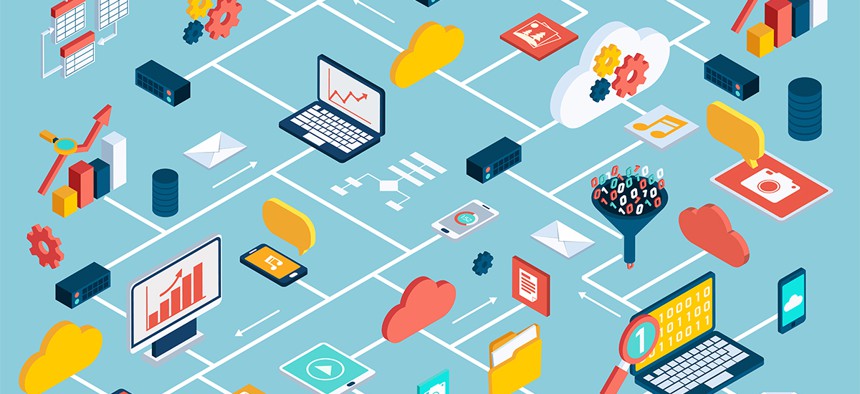How Do You Govern Data in the Internet of Everything?

Macrovector/Shutterstock.com
By 2020, more than 200 billion sensors will produce data on everything from human hearts to heavy construction equipment to ocean seafloors.
Today’s increasingly connected world has the federal government reacting to a level of connectivity that was unimaginable only a decade ago.
By 2020, more than 200 billion sensors will produce data on everything from human hearts to heavy construction equipment to ocean seafloors -- and all of it will flow through the Internet.
Technologists call it the Internet of Things or the Internet of Everything, but semantics aside, it’s both an exceedingly large challenge and significant opportunity for federal agencies.
Because their missions directly impact 300 million Americans – more two-thirds of whom own smartphones – federal agencies are also among the largest data producers and collectors. That means the effects of exponential data growth are magnified among agencies.
The Internet of Everything has most agencies in reaction mode. On one hand, they’re juggling how to implement technologies that make better use of the growing amount of data available, battling old acquisition policies and navigating bureaucratic seas.
On the other, they’re figuring out how to implement governance policies and implement new laws, like the Digital Accountability and Transparency Act, which ensure public information remains as transparent as possible
It’s not an easy tightrope to walk.
On Thursday, join Nextgov for a viewcast on information governance in the Internet of Everything with panelists Dr. Michael Valivullah, chief technology officer at the Agriculture Department's National Agricultural Statistics Service, and David Brown, archivist at the Securities and Exchange Commission.
You can register here.
(Image via Macrovector/Shutterstock.com)



